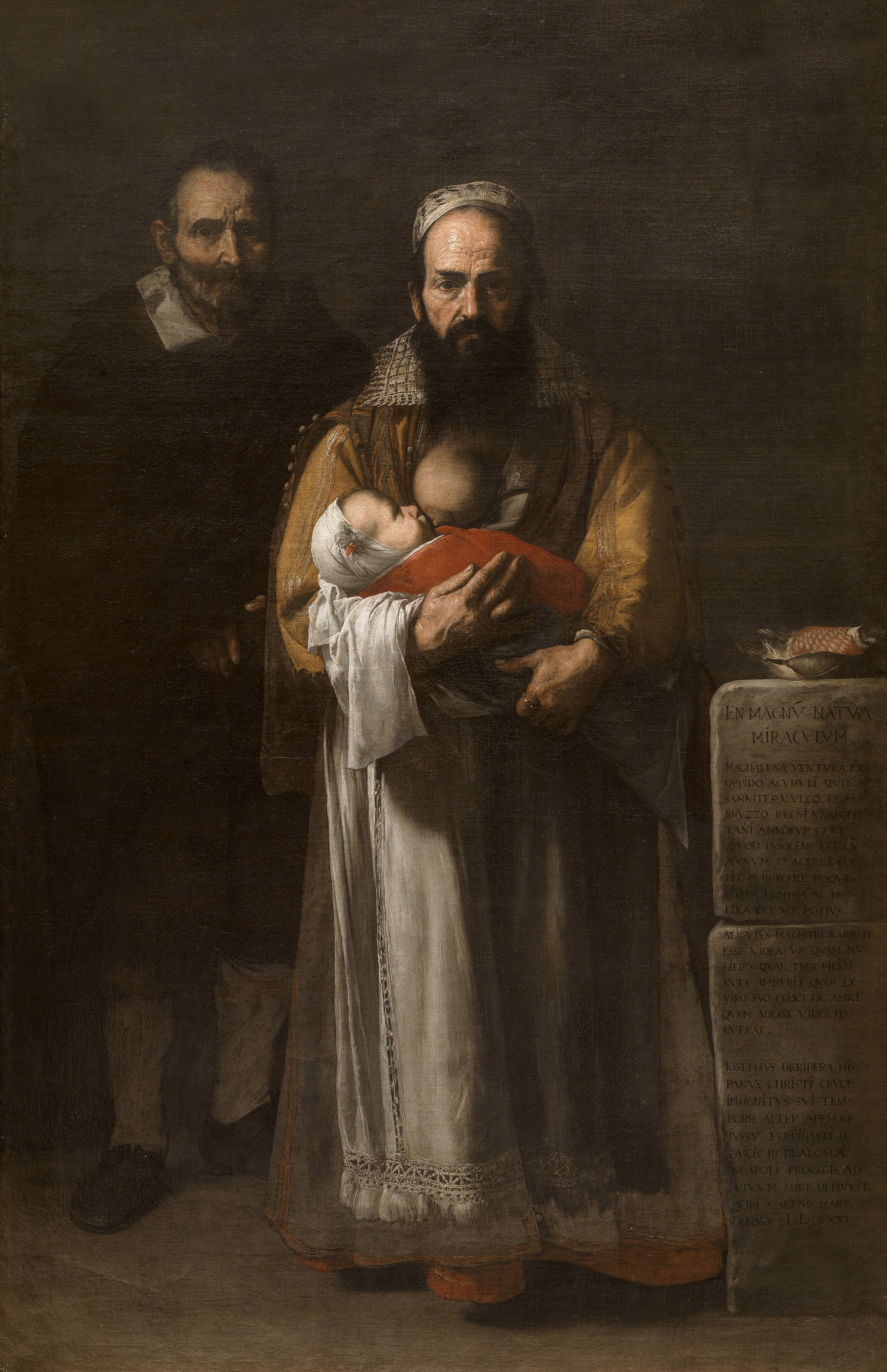Commissioned by the Viceroy Fernando Afán de Ribera y Enríquez (1570-1637), third Duke of Alcalá, we have a curious document on its execution, recently published by G. de Vito. In his correspondence of 11 February 1631, the Venetian ambassador records a visit to the painter's studio: "Nelle stanze del V. Re stava un pittore famoso.Re stava un pittore famosisimo faccendo un ritratto di una donna Abbruzzese maritata e madre di molti figli, la quale ha la faccia totalmente virile, con piu di un palmo di barba ñera bellisima, ed il petto tutto peloso, si prese gusto su Eccellenzza di farmela veder, como cosa maravigliosa, et veramente é tale".
The canvas, as stated in its inscription, is dated five days later, on 16 February. It remained in the family collection, successively linked to the House of the Duke and Duchess of Medinaceli, to whom it belonged in 1808. Sent to Paris for the Napoleon Museum, it was returned to Spain in 1813 and deposited in the Royal Academy of San Fernando, in whose catalogue it appears from 1818 to 1829. It was then finally returned to the Medinaceli family and by inheritance passed to the family of Lerma, where it was deposited in the Hospital Tavera in Toledo, the seat of the foundation of that title.
A copy or replica in small format is known to exist, mentioned by Ponz and Ceán Bermúdez in the Palace of La Granja. Another copy is mentioned in the Ruiz de Alda collection in Madrid. In 1884, P. de Madrazo confused this canvas with the portrait of another bearded woman, Brígida del Río, who arrived at the Madrid court in 1590 and was portrayed by Sánchez Cotán.
This superb, singular canvas is a case apart in Ribera's production, and is one of the most curious works in Spanish painting, or rather, in European painting at the time.
Its documentary nature is evident both from what we know of its genesis and from the long and explicit inscription, but the artist's mastery has succeeded in transforming this abnormal and almost repugnant "clinical case" into a superb work of art, in which the beauty of the pictorial treatment is allied to an evident mysterious suggestion. The rich psychological content of the drama of the wife's virilisation and the husband's resigned bitterness are expressed here with thrilling intensity.
Dated 1631, it is executed in an entirely tenebrist key, strictly Caravaggesque: a dense, dramatic darkness from which emerge, enhanced by the light, a series of significant elements of astonishing intensity.
The brushstroke, thick and precise, rigorously models the forms and suggests the various materials with masterly virtuosity. He spares no wrinkles or deformities and translates the different fabrics with admirable tactile precision. The small group of accessories placed on the ashlar, like a kind of significant still life, are undoubtedly endowed with symbolic meaning: the spindle is the female attribute that alludes to domestic chores, and it has been suggested that a conch shell, a hermaphrodite symbol, is next to it, but it does not seem that such an identification can be accepted. It looks more like a reeling machine, with woollen yarn, which would merely corroborate the sense of the feminine in open paradoxical contrast with the masculine aspect of the woman. In addition to its evident documentary value, which links it, as has been said, with the decidedly "proto-scientific" atmosphere of a certain analytical naturalism, it is also possible that it was intended to have a deeper symbolic content.
Alfonso E. Pérez Sánchez, December 2008
NOTE: This painting is on temporary deposit at the Museo Nacional del Prado.


